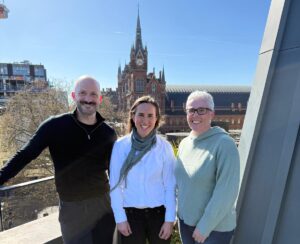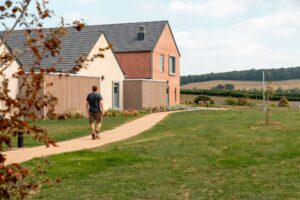An opinion by Karen Flatt, Architect and Mental Health Lead, IBI Group
I have been an architect specialising in mental health design for over 20 years and have seen a lot of changes in that time – when I started there weren’t specialist ‘anti-ligature’ or ligature-resistant fixtures and fittings on the market so we as architects had to find ways to design which meant we were providing the safest environment possible but having to use standard products which could be used in any building typology. We had to think creatively.
Gradually more products and ideas have come onto the market which have provided anti-ligature or ligature-resistant fittings so we don’t necessarily as specifiers and care providers have to think about the risks of installing those products – if something goes wrong we can blame the product and the product designer rather than look at the root cause of why someone may have used a product to harm themselves. But who are we designing for – is it to make things easy to clean and maintain and have we lost some of the beauty in our mental health buildings?
When creating secure and therapeutic environments there is a balance between creating a therapeutic homely space and reducing risk to create safe spaces but have we gone too far in reducing the risks for staff and and overlooked the therapeutic benefits of beauty for the patient?
Beauty can be defined as “…the quality or aggregate of qualities in a person or thing that gives pleasure to the senses or pleasurably exalts the mind or spirit.”
Safety can be defined as “…the condition of being protected from or unlikely to cause danger, risk, or injury”
Research into neuro-aesthetics has found that human brains react to beauty in the same part of the brain that scientists have identified as the reward and pleasure centre. Blood flow increases in this area releasing dopamine which plays a role in how we feel pleasure. The benefits of seeing something beautiful or viewing nature have an effect on our minds, bodies and senses which in turn has an effect on our moods and whether we need medication.
The original asylum building at Bedlam was described in the 17th Century as ‘The palace beautiful’ – it was likened to Versailles. As more asylums were built in the following centuries the buildings and landscape were mimicking stately homes.
These buildings included beautiful and extensive landscaped gardens for patients to enjoy views of nature and undertake activities such as gardening. They also included large recreation spaces – halls, ballrooms and theatres for social functions. As Covid has shown us we are social creatures who like to be together – it’s good for our mental health and wellbeing to interact with each other and come together as communities. If we don’t have spaces where we can do this in a secure or healthcare community; how does that make people feel?
Anecdotally we hear that patients find some newer mental health buildings ugly, stark and boring with bright lighting, noise and minimal privacy – the use of unfamiliar fixtures and fittings increasing the sense of incarceration not care. With increased boredom and frustration with the surroundings, the use of institutional looking anti-ligature fittings can then become a challenge to patients to break or harm themselves with as they are not ‘normal’.
Are we now at the point where we need to re-evaluate these specialist products and designs? When judging if a fitting is suitable in addition to criteria such as safety, ease of maintenance and cleaning should we be looking at the aesthetics and asking patients how these products make them feel? I am not advocating building asylums again and we definitely need to keep all building users safe in a healthcare environment but are there better ways of designing mental health environments which make people well?





